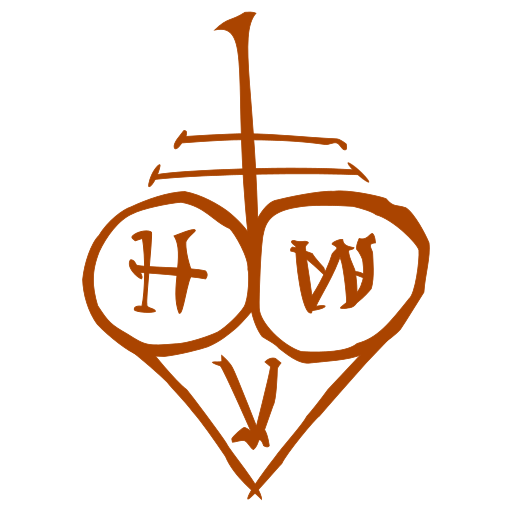In 1584, following the devastating plague epidemic in Venice in 1575–1577, the secretary of the Magistrato alla Sanità compiled a summary of all the decrees and decisions, which the Republic of Venice had taken during the crisis.
The secretary was the highest civil servant in a state office, akin to a head of department or a chief of staff today. Such positions were reserved for wealthy original citizens, who together were known as the order of the secretaries.
As secretary of a magistracy of the Republic of Venice, Cornelio Morello was therefore one of the highest ranking non-nobles in Venetian society.
This part of the compilation recounts how the plague arrived in Venice, through a single infected individual arriving from the mainland.
The original text is reproduced after the translation.
The start of the plague in 1575
Having come to this city in the year 1575 on the 25th of June, a man from Trentino, who said he had left the Borgo di Val Sugana which was then plague-stricken, arrived at the house of Mr Vicenzo di Franceschi in the district of S. Marciliano,1 in which, at that time, Franceschi was in the countryside, there was a boatman, a relative of the Trentino, left by Franceschi to guard the house, together with the boatman’s wife and children, and some of Franceschi’s household servants, in all seven persons.
Having been infected with the contagious disease because of some cloths that he had carried with him in a bag or bundle, he died on July 2 and was buried freely without arousing any suspicion.
But when, in just a few days, three women died in the same house, it was, by order of the Most Illustrious Lords of Health, quarantined, and after the dead bodies were examined by doctors, they were judged to have died of the plague, and similarly, the two living women were found to be afflicted by the same disease.
For this reason, the dead and wounded were quickly brought to the Lazaretto2 in the presence of the Illustrious Lords Inspectors of Health of that time and of their ministers, and also all the goods of that house, where everything which was outside the coffers was then burned, and that which was in the boxes exposed to the air for 40 days.3
But because almost all the drapes of the Trentino were sold and pawned4 by those of the household, to provide for him during the few days he was ill, and also to have him buried, in just a few days both for this reason and because those of that household, before they were seized, had been in contact with many people, the illness was discovered in various places in the city, although by those Most Illustrious Lords Inspectors of Health, nothing was spared to do all that could be done so that the illness would not spread through the city, sparing no vigilance, effort, or anything else, even at great risk to their own lives.
Nevertheless, the evil continued to spread more and more each hour throughout the city, where it lasted for two years.
Notes
- The parish of San Marziale in Cannaregio. ↩︎
- Probably the Lazzaretto Vecchio. ↩︎
- Airing and exposure to sun light were common treatments for suspect objects. For more, see Bad air will get you sick. ↩︎
- Often, taverns doubled as pawn shops, which would certainly help the contagion spread. See Venice rhymes with Wine. ↩︎
Related articles
Localities
Original text
Essendo venuto in questa città l’anno 1575 a 25 di giugno un trentino, per quanto lui disse partito dal Borgo di Val Sugana allhora apestato, capitò in casa di messer Vicenzo di Franceschi in contrà de S. Marciliano, nella qual essendo allhora il Franceschi in villa si attrovava un barcaruolo parente di esso trentino lassato dal Franceschi per guarda di detta casa insieme con la moglie et figlioli del barcarolo et alcune massare del Franceschi, in tutto persone sette.
Questo essendose ferito di male contagioso per causa di alcuni drapi che haveva portato secco in un valisino o fagotto, morì alli 2 luglio et fu sepulto liberamente, senza che di ciò se ne havesse alcun sospetto.
Ma essendo poi in pochi giorni morte nella medesima casa tre donne fu quella per ordine delle Clarissimi Signori alla Sanità sequestrata, et fatti veder li corpi morti da medici furno giudicati esser morti da peste, et medesmamente le doi donne vive esser feritte dal detto male.
Per il che furono imediate in tempo di note alla presentia di Clarissimi Provededori alla Sanità di quel tempo et de suoi ministri condoti li morti et feriti al Lazaretto, et anco tutte le robbe di essa casa, dove furono poi abrusciate tutte quelle erano fuori delle casse, et quelle erano nelle casse sborate all’aere per giorni 40.
Ma perché quasi tutti li drapi del trentino furno da quelli di casa venduti et impegnati per sovenirlo in quelli pochi giorni che stete amalato, et anco per farlo sepellir, in pochi giorni sì per questa causa come anco perchè quelli di essa casa prima che fossero sequestrati havevano con molti praticato si scoperse il male in diversi lochi della città, benchè da quelli Clarissimi Signori Provededori alla Sanità non fosse in conto alcuno mancato di far quanto si poteva acciò il male non si spargesse per la città, non sparagnando a vigilie, fatiche et ogni altra cosa, con molto pericolo etiam delle loro vite.
Non dimeno il male andò ogn’hor più dilatandosi et spargendosi per la città, dove continuò per anni doi.
Archivio di Stato di Venezia, Provveditori alla Sanità, busta 6, c. 154r


Leave a Reply